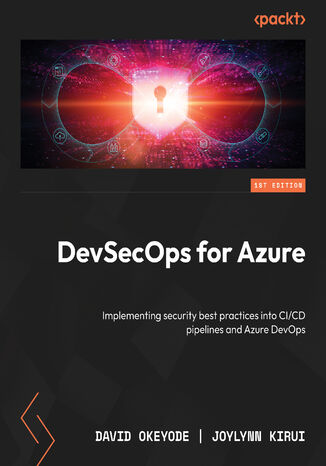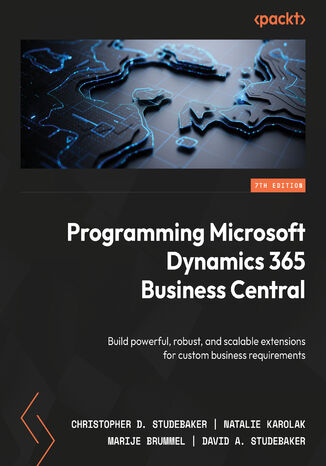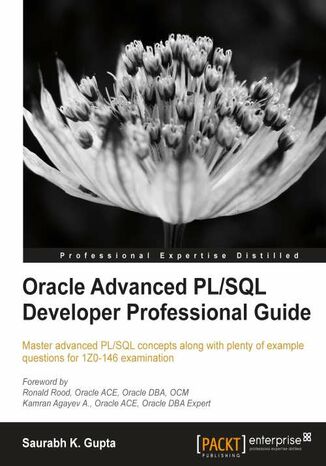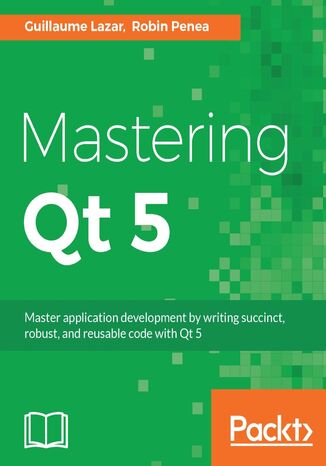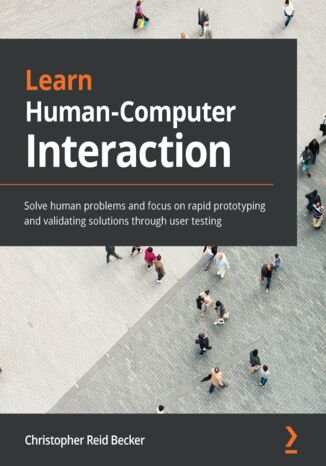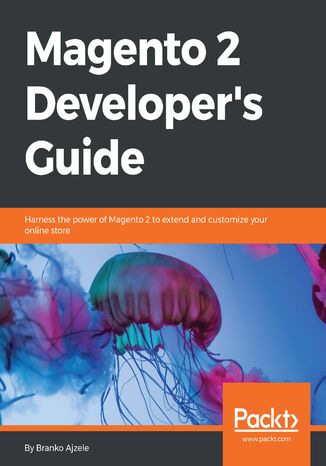Categories
Ebooks
-
Business and economy
- Bitcoin
- Businesswoman
- Coaching
- Controlling
- E-business
- Economy
- Finances
- Stocks and investments
- Personal competence
- Computer in the office
- Communication and negotiation
- Small company
- Marketing
- Motivation
- Multimedia trainings
- Real estate
- Persuasion and NLP
- Taxes
- Social policy
- Guides
- Presentations
- Leadership
- Public Relation
- Reports, analyses
- Secret
- Social Media
- Sales
- Start-up
- Your career
- Management
- Project management
- Human Resources
-
For children
-
For youth
-
Education
-
Encyclopedias, dictionaries
-
E-press
- Architektura i wnętrza
- Health and Safety
- Biznes i Ekonomia
- Home and garden
- E-business
- Ekonomia i finanse
- Esoterecism
- Finances
- Personal finance
- Business
- Photography
- Computer science
- HR & Payroll
- For women
- Computers, Excel
- Accounts
- Culture and literature
- Scientific and academic
- Environmental protection
- Opinion-forming
- Education
- Taxes
- Travelling
- Psychology
- Religion
- Agriculture
- Book and press market
- Transport and Spedition
- Healthand beauty
-
History
-
Computer science
- Office applications
- Data bases
- Bioinformatics
- IT business
- CAD/CAM
- Digital Lifestyle
- DTP
- Electronics
- Digital photography
- Computer graphics
- Games
- Hacking
- Hardware
- IT w ekonomii
- Scientific software package
- School textbooks
- Computer basics
- Programming
- Mobile programming
- Internet servers
- Computer networks
- Start-up
- Operational systems
- Artificial intelligence
- Technology for children
- Webmastering
-
Other
-
Foreign languages
-
Culture and art
-
School reading books
-
Literature
- Antology
- Ballade
- Biographies and autobiographies
- For adults
- Dramas
- Diaries, memoirs, letters
- Epic, epopee
- Essay
- Fantasy and science fiction
- Feuilletons
- Work of fiction
- Humour and satire
- Other
- Classical
- Crime fiction
- Non-fiction
- Fiction
- Mity i legendy
- Nobelists
- Novellas
- Moral
- Okultyzm i magia
- Short stories
- Memoirs
- Travelling
- Narrative poetry
- Poetry
- Politics
- Popular science
- Novel
- Historical novel
- Prose
- Adventure
- Journalism, publicism
- Reportage novels
- Romans i literatura obyczajowa
- Sensational
- Thriller, Horror
- Interviews and memoirs
-
Natural sciences
-
Social sciences
-
School textbooks
-
Popular science and academic
- Archeology
- Bibliotekoznawstwo
- Cinema studies
- Philology
- Polish philology
- Philosophy
- Finanse i bankowość
- Geography
- Economy
- Trade. World economy
- History and archeology
- History of art and architecture
- Cultural studies
- Linguistics
- Literary studies
- Logistics
- Maths
- Medicine
- Humanities
- Pedagogy
- Educational aids
- Popular science
- Other
- Psychology
- Sociology
- Theatre studies
- Theology
- Economic theories and teachings
- Transport i spedycja
- Physical education
- Zarządzanie i marketing
-
Guides
-
Game guides
-
Professional and specialist guides
-
Law
- Health and Safety
- History
- Road Code. Driving license
- Law studies
- Healthcare
- General. Compendium of knowledge
- Academic textbooks
- Other
- Construction and local law
- Civil law
- Financial law
- Economic law
- Economic and trade law
- Criminal law
- Criminal law. Criminal offenses. Criminology
- International law
- International law
- Health care law
- Educational law
- Tax law
- Labor and social security law
- Public, constitutional and administrative law
- Family and Guardianship Code
- agricultural law
- Social law, labour law
- European Union law
- Industry
- Agricultural and environmental
- Dictionaries and encyclopedia
- Public procurement
- Management
-
Tourist guides and travel
- Africa
- Albums
- Southern America
- North and Central America
- Australia, New Zealand, Oceania
- Austria
- Asia
- Balkans
- Middle East
- Bulgary
- China
- Croatia
- The Czech Republic
- Denmark
- Egipt
- Estonia
- Europe
- France
- Mountains
- Greece
- Spain
- Holand
- Iceland
- Lithuania
- Latvia
- Mapy, Plany miast, Atlasy
- Mini travel guides
- Germany
- Norway
- Active travelling
- Poland
- Portugal
- Other
- Przewodniki po hotelach i restauracjach
- Russia
- Romania
- Slovakia
- Slovenia
- Switzerland
- Sweden
- World
- Turkey
- Ukraine
- Hungary
- Great Britain
- Italy
-
Psychology
- Philosophy of life
- Kompetencje psychospołeczne
- Interpersonal communication
- Mindfulness
- General
- Persuasion and NLP
- Academic psychology
- Psychology of soul and mind
- Work psychology
- Relacje i związki
- Parenting and children psychology
- Problem solving
- Intellectual growth
- Secret
- Sexapeal
- Seduction
- Appearance and image
- Philosophy of life
-
Religion
-
Sport, fitness, diets
-
Technology and mechanics
Audiobooks
-
Business and economy
- Bitcoin
- Businesswoman
- Coaching
- Controlling
- E-business
- Economy
- Finances
- Stocks and investments
- Personal competence
- Communication and negotiation
- Small company
- Marketing
- Motivation
- Real estate
- Persuasion and NLP
- Taxes
- Social policy
- Guides
- Presentations
- Leadership
- Public Relation
- Secret
- Social Media
- Sales
- Start-up
- Your career
- Management
- Project management
- Human Resources
-
For children
-
For youth
-
Education
-
Encyclopedias, dictionaries
-
E-press
-
History
-
Computer science
-
Other
-
Foreign languages
-
Culture and art
-
School reading books
-
Literature
- Antology
- Ballade
- Biographies and autobiographies
- For adults
- Dramas
- Diaries, memoirs, letters
- Epic, epopee
- Essay
- Fantasy and science fiction
- Feuilletons
- Work of fiction
- Humour and satire
- Other
- Classical
- Crime fiction
- Non-fiction
- Fiction
- Mity i legendy
- Nobelists
- Novellas
- Moral
- Okultyzm i magia
- Short stories
- Memoirs
- Travelling
- Poetry
- Politics
- Popular science
- Novel
- Historical novel
- Prose
- Adventure
- Journalism, publicism
- Reportage novels
- Romans i literatura obyczajowa
- Sensational
- Thriller, Horror
- Interviews and memoirs
-
Natural sciences
-
Social sciences
-
Popular science and academic
-
Guides
-
Professional and specialist guides
-
Law
-
Tourist guides and travel
-
Psychology
- Philosophy of life
- Interpersonal communication
- Mindfulness
- General
- Persuasion and NLP
- Academic psychology
- Psychology of soul and mind
- Work psychology
- Relacje i związki
- Parenting and children psychology
- Problem solving
- Intellectual growth
- Secret
- Sexapeal
- Seduction
- Appearance and image
- Philosophy of life
-
Religion
-
Sport, fitness, diets
-
Technology and mechanics
Videocourses
-
Data bases
-
Big Data
-
Biznes, ekonomia i marketing
-
Cybersecurity
-
Data Science
-
DevOps
-
For children
-
Electronics
-
Graphics/Video/CAX
-
Games
-
Microsoft Office
-
Development tools
-
Programming
-
Personal growth
-
Computer networks
-
Operational systems
-
Software testing
-
Mobile devices
-
UX/UI
-
Web development
-
Management
Podcasts
DevSecOps for Azure. End-to-end supply chain security for GitHub, Azure DevOps, and the Azure cloud
David Okeyode, Joylynn Kirui, Scott Hanselman
Businesses must prioritize security, especially when working in the constantly evolving Azure cloud. However, many organizations struggle to maintain security and compliance. Attackers are increasingly targeting software development processes, making software supply chain security crucial. This includes source control systems, build systems, CI/CD platforms, and various artifacts. With the help of this book, you’ll be able to enhance security and compliance in Azure software development processes.Starting with an overview of DevOps and its relationship with Agile methodologies and cloud computing, you'll gain a solid foundation in DevSecOps principles. The book then delves into the security challenges specific to DevOps workflows and how to address them effectively. You'll learn how to implement security measures in the planning phase, including threat modeling and secure coding practices. You'll also explore pre-commit security controls, source control security, and the integration of various security tools in the build and test phases. The book covers crucial aspects of securing the release and deploy phases, focusing on artifact integrity, infrastructure as code security, and runtime protection.By the end of this book, you’ll have the knowledge and skills to implement a secure code-to-cloud process for the Azure cloud.
Marije Brummel, Natalie Karolak, Christopher D. Studebaker, David Studebaker
Business Central opens a world of endless possibilities for custom business logic and functionality through extensions and customizations. For beginners in the AL language, navigating the vast landscape can feel overwhelming. It’s challenging to know where to start and what’s essential to learn. This updated edition offers a concise and well-organized guide, featuring hands-on exercises to support a successful learning journey.You’ll get to grips with the basics of Business Central and how to create your first Visual Studio Code project with the AL language. As you learn about the table data structure, simple and complex data types, relationships, validation, and data flow, you’ll be able to add and extend tables to your project. Progressively, you'll uncover the intricacies of user interfaces with pages, create advanced Excel report layouts, and harness the power of data queries. Immersing yourself in the AL language syntax, you’ll start with variables, methods, procedures, and statements. You'll explore advanced topics to create business logic such as FlowFields, filtering, CRUD methods, interactions between object types, and different API interfaces that can be created using the AL language.By the end of this book, you’ll be equipped to build fully featured, robust extensions and custom capabilities for Business Central.
PL/SQL (Procedural Language/Structured Query Language) is Oracle Corporation's procedural extension language for SQL and the Oracle relational database. Server-side PL/SQL is stored and compiled in the Oracle Database and runs within the Oracle executable. With this guide Oracle developers can work towards accomplishing Oracle 11g Advanced PL/SQL Professional certification, which is the second milestone for developers working at the Associate level. The Oracle Advanced PL/SQL Developer Professional Guide helps you master advanced PL/SQL concepts. Besides the clear and precise explanation on advanced topics, it also contains example code and demonstrations, which gives a sense of application and usage to readers.The book gives a deep insight that will help transform readers from mid-level programmers to professional database developers. It aims to cover the advanced features of PL/SQL for designing and optimizing PL/SQL code.This book starts with an overview of PL/SQL as the programming database language and outlines the benefits and characteristics of the language. The book then covers the advanced features that include PL/SQL code writing using collections, tuning recommendations using result caching, implementing VPD to enforce row level security, and much more. Apart from programming, the book also dives deep into the usage of the development tool SQL Developer, employing best practices in database environments and safeguarding the vulnerable areas in PL/SQL code to avoid code injection.
Mastering Qt 5. Create stunning cross-platform applications
Qt 5.7 is an application development framework that provides a great user experience and develops full-capability applications with Qt Widgets, QML, and even Qt 3D.This book will address challenges in successfully developing cross-platform applications with the Qt framework. Cross-platform development needs a well-organized project. Using this book, you will have a better understanding of the Qt framework and the tools to resolve serious issues such as linking, debugging, and multithreading. Your journey will start with the new Qt 5 features. Then you will explore different platforms and learn to tame them. Every chapter along the way is a logical step that you must take to master Qt. The journey will end in an application that has been tested and is ready to be shipped.
Human-Computer Interaction (HCI) is a field of study that researches, designs, and develops software solutions that solve human problems. This book will help you understand various aspects of the software development phase, from planning and data gathering through to the design and development of software solutions. The book guides you through implementing methodologies that will help you build robust software.You will perform data gathering, evaluate user data, and execute data analysis and interpretation techniques. You’ll also understand why human-centered methodologies are successful in software development, and learn how to build effective software solutions through practical research processes. The book will even show you how to translate your human understanding into software solutions through validation methods and rapid prototyping leading to usability testing. Later, you will understand how to use effective storytelling to convey the key aspects of your software to users. Throughout the book, you will learn the key concepts with the help of historical figures, best practices, and references to common challenges faced in the software industry.By the end of this book, you will be well-versed with HCI strategies and methodologies to design effective user interfaces.
Wearable circuits add interaction and purpose to clothing and other wearable devices that are currently widely used in medical, social, safety, entertainment, and sports fields. To develop useful and impressive prototypes and wearables, you’ll need to be skilled in designing electronic circuits and working with wearable technologies.This book takes you on an interesting journey through wearable technology, starting from electronic circuits, materials, and e-textile toolkits to using Arduino, which includes a variety of sensors, outputs, actuators, and microcontrollers such as Gemma M0 and ESP32. As you progress, you’ll be carefully guided through creating an advanced IoT project. You’ll learn by doing and create wearables with the help of practical examples and exercises. Later chapters will show you how to develop a hyper-body wearable and solder and sew circuits. Finally, you’ll discover how to build a culture-driven wearable to track data and provide feedback using a Design Innovation approach.After reading this book, you’ll be able to design interactive prototypes and sew, solder, and program your own Arduino-based wearable devices with a purpose.
Joomla! 1.6 First Look. A concise guide to everything that's new in Joomla! 1.6
Release of the much awaited Joomla! 1.6 is just round the corner. There is a lot of hype and curiosity about the new features Joomla! 1.6 will provide and how it will affect existing users.Joomla! 1.6 First Look is a concise guide to the new features of Joomla! 1.6, targeted at existing Joomla! users and developers. If you want to see what's new in Joomla 1.6 and how it's going to affect you, this is the book for you. This book will give readers an insight into the new features of Joomla! 1.6, showing them what has changed, how the changes will affect them, and how to upgrade to Joomla! 1.6 from existing Joomla! versions. It begins with general changes in interface and basic articles, and then takes you through the changes in menus, control levels, templates, extensions, and SEO features. It explains the new features and how to use them, drawing attention to significant differences from how things used to behave. By the end of this book, you will be well-versed with the consequences these changes will bring to you as a Joomla! user or developer.
Magento is one of the most exciting, flexible, and customizable e-commerce systems. It offers you an extensive suite of powerful tools for creating and managing an online store. After years of development, Magento 2 introduces itself with a strong emphasis on modularity, Web API's, automated testing and overall new technology stack platform.The long-awaited Magento 2 release introduces a whole new e-commerce platform to develop online stores. The all new Magento 2 architecture, Web APIs, and a host of other features are equally challenging to master as much as they are exciting to use.Tshis book will ease the learning curve by offering step-by-step guidance on how to extend the core functionality of your Magento 2 store.This book is your one-stop guide to build and customize a quality e-commerce website from the latest version of one of the largest, fastest growing, and most popular e-commerce platforms—Magento 2.We start off with an introduction to the fundamental concepts of Magento to give you a foundation to work from. We then move on to configure the development and basic production environment for Magento. After this, you’ll get to grips with the major concepts and conventions that are new to the Magento 2 platform. We then delve deeper to get to the core of automated deployments, persisting data, writing data fixture scripts and applying various backend and frontend modifications. As we near the end of the book, you will learn to make API calls and write automated tests. Finally, you will be guided through building a full-blown helpdesk module from scratch.By the end of this book, you will have learned a wide range of techniques to extend and customize your Magento 2 store to fit the requirements of your business.

